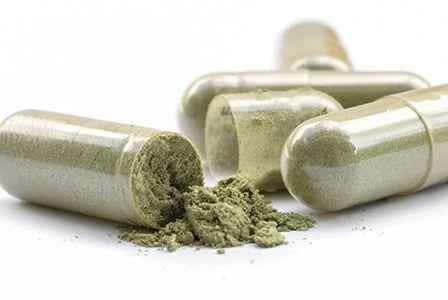
For optimal absorption, and for safety, learn how to take your supplements properly with these tips.
The use of nutritional supplements has increased significantly over the last decade. But as more people take supplements, many are beginning to wonder if they’re taking them properly, absorbing them well, and getting the most out of them. Our guide will help you determine when and how to take some of the most commonly used supplements.
Iron
For women in particular, iron supplement use is fairly common. But how iron supplements are taken can have an impact on how much iron is actually absorbed. Follow these tips to get the most out of your iron supplement.
Vitamin C
Vitamin C can help improve the absorption of iron and is often recommended as a co-supplement when iron supplements are used.
Possible blockers
High fibre and tannins (such as those found in tea) are two of the food-based ingredients that may interfere with iron absorption. It’s best to avoid taking your iron with these.
Calcium supplementation, particularly in doses of 500 mg or more, can decrease iron absorption from both food and supplements. In one study, calcium in doses of 800 mg and over was found to decrease iron absorption from supplements by 37 to 49 percent.
Calcium
In addition to taking your calcium supplement separately from iron supplements, it should also be taken a couple of hours apart from several prescription medications. Calcium competes with many medications for absorption in the gut and can therefore affect the blood levels of these medicines and lower their effectiveness. Of particular concern are certain thyroid and antiseizure medications, antibiotics, and antacids that contain aluminum.
If you’re taking any of these medications, and also taking calcium, space them two to four hours apart from one another. Consult your health care practitioner if you’re on medication to be on the safe side.
Probiotics
With meals? After meals? Between meals? When to take probiotics is one of the most frequently asked questions when it comes to taking these supplements. Part of the confusion is the variation in advice found on product labels, as well as the profusion of different types of probiotic products on the market.
There has also been relatively little research into the matter over the years. A few recent studies have provided some information that can help answer the question of when to take your probiotics, at least for specific strains.
When to take them
A study of Lactobacillus helveticus, Lactobacillus rhamnosus, Bifidobacterium longum, and Saccharomyces boulardii found that these species survived in higher numbers in the gastrointestinal tract when they were taken either with a meal or 30 minutes before a meal. The same study also found that fats may improve the survival of probiotics, so more of them reach the intestine.
Coated versus uncoated
One of the main concerns with the efficacy of probiotic products is their survival after passing through the stomach. One of the ways manufacturers provide these healthy bacteria with more protection is to coat them in such a way that they can resist the harsh, acidic environment of the stomach. Microencapsulated or enteric coated probiotic formulas are available.
If you take a high enough dose of probiotics, the likelihood of a therapeutic dose getting to the intestine is pretty good. The point in offering probiotics a protective coating is to provide therapeutic effects at lower doses. But does the approach work? One recent study suggests there may be some merit in this approach.
A mix of five probiotics, including both Bifidobacteria and Lactobacillus species, was compared in traditional uncoated and microencapsulated forms. Although there was good evidence for survival of the probiotics in both cases, when people took the microencapsulated product, about five times the amount of probiotic bacteria survived the trip through their stomach and intestine.
Although research in the area is still slim right now, either taking your probiotics with food or taking a microencapsulated or enteric coated product could increase the number of friendly bacteria that make it to the intestine.
Fat- versus water-soluble vitamins
One of the main ways to classify vitamins is fat versus water soluble. Water-soluble vitamins can dissolve in the watery environments of our bodies (such as the blood), allowing them to travel more easily.
Fat-soluble vitamins, on the other hand, do not dissolve in water and require fat to be absorbed into the body. For this reason, fat-soluble vitamins—vitamins A, D, E, and K—are usually best taken with a meal that provides some fat for their absorption. They can also be taken in softgel or oil form.
Zinc
A widely used mineral in our bodies, zinc is a popular supplement for both immune support and prostate health. As many who have taken zinc on an empty stomach will attest, zinc should be taken with food. Taking zinc on an empty stomach often causes nausea and even abdominal pain.
St. John’s wort
Although not as popular as it once was, St. John’s wort is still widely used as a natural treatment for mild to moderate depression. Unfortunately, St. John’s wort is well known to affect the body’s metabolism of several drugs, and therefore their effectiveness.
Because St. John’s wort can affect the way the liver metabolizes medications, there are many medications that may be affected. If you’re taking any prescription medication, you should consult your health care practitioner before taking St. John’s wort.
Supplements that go well together
Some natural products support one another and are therefore best taken at the same time.
Fish oil and coenzyme Q10 (CoQ10)
These two supplements make a great heart health support combo. CoQ10 is fat soluble and fish oil needs antioxidant protection. Taken together, they support each other while also supporting cardiovascular health. CoQ10 levels can be lowered by cholesterol medications. Taking CoQ10 supports healthy blood pressure and energy production in hard-working muscles such as the heart, while fish oil can help lower elevated blood fats.
Iron and vitamin C
Already mentioned but worth repeating. About 200 mg of vitamin C for each 30 mg of iron supplemented is a good ratio.
Antioxidants
These include vitamins C and E, as well as plant-derived antioxidants such as those found in berry or green tea extracts. In the body, antioxidant species often work in concert, helping to regenerate one another after they have been oxidized by free radicals. Taking them at the same time is a good idea if you’re taking antioxidant supplements.
Always consult your health care practitioner to determine which supplements are right for you.



